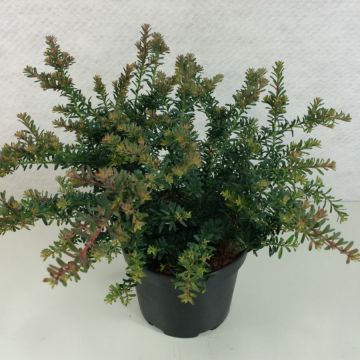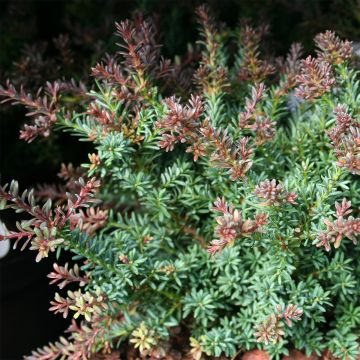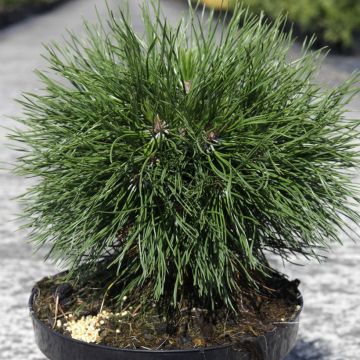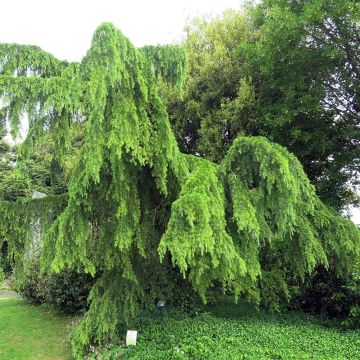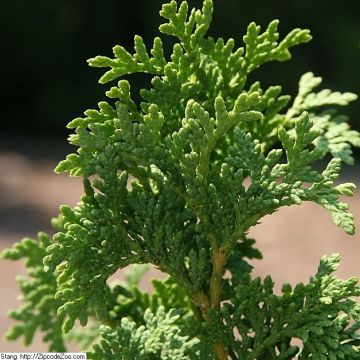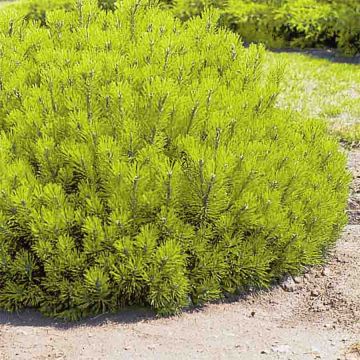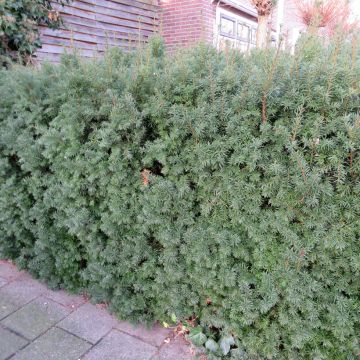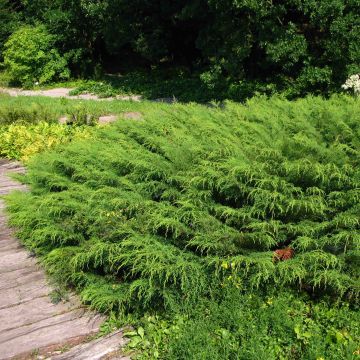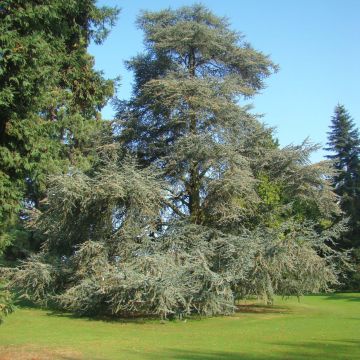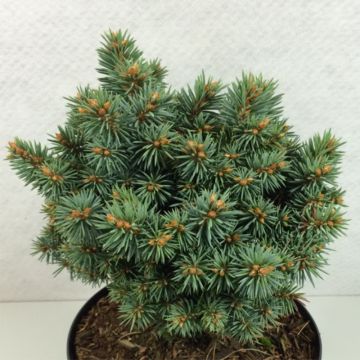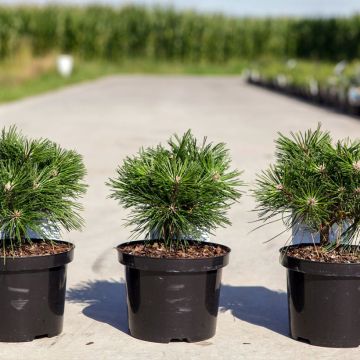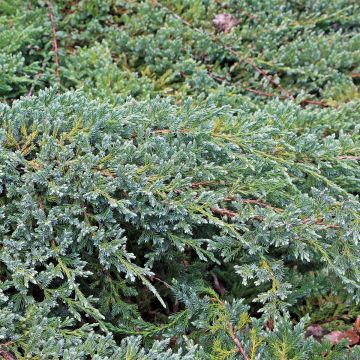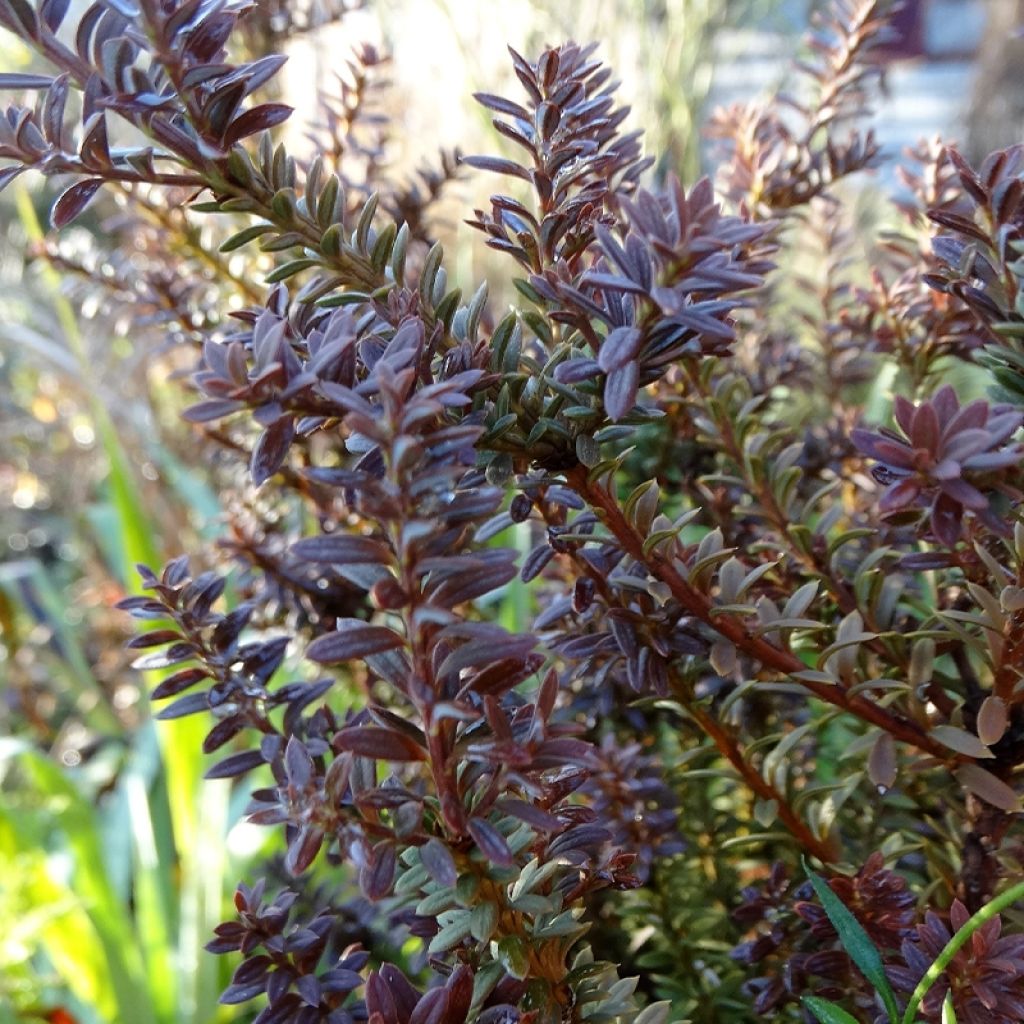

Podocarpus Chocolate Box
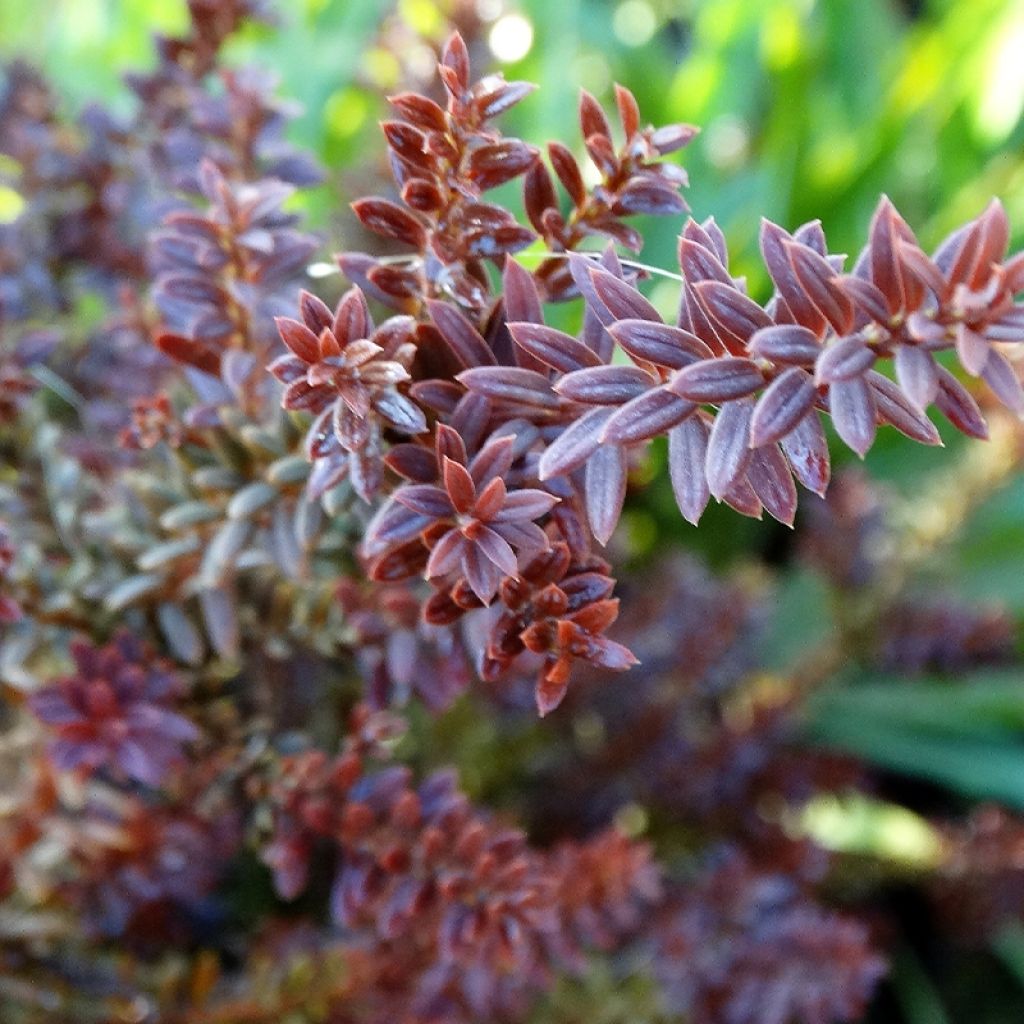

Podocarpus Chocolate Box
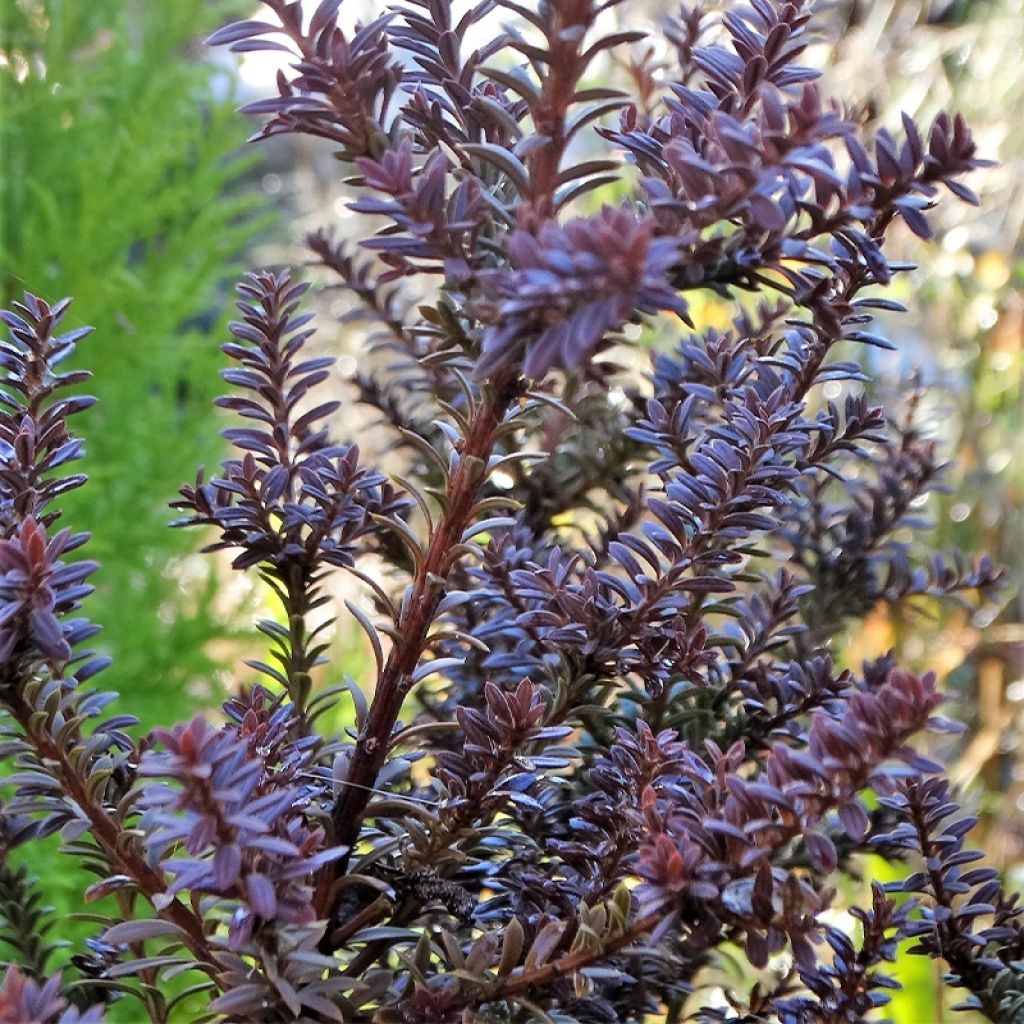

Podocarpus Chocolate Box
Podocarpus Chocolate Box
Podocarpus Chocolate Box
Podocarp
This plant carries a 24 months recovery warranty
More information
We guarantee the quality of our plants for a full growing cycle, and will replace at our expense any plant that fails to recover under normal climatic and planting conditions.
From €5.90 for pickup delivery and €6.90 for home delivery
Express home delivery from €8.90.
Does this plant fit my garden?
Set up your Plantfit profile →
Description
Forming a small bush with an erect to spreading habit, Podocarpus 'Chocolate Box' is a charming small conifer. Its evergreen foliage changes colour with the seasons. Its tiny leaves are bronze when they emerge before turning dark green in the growing season. When the first cold weather arrives, the foliage takes on a surprising chocolate hue that persists throughout winter. Its growth is rather slow, and it prefers cool, light, neutral to acidic soils. Hardy, it grows in full sun or partial shade and adapts well to container cultivation.
Podocarpus is an evergreen conifer from the Podocarpaceae family, which includes 19 genera and over 150 species, most of which are unknown in our latitudes. They are plants from temperate and warm zones of different continents, including Australasia. Many dwarf Podocarpus species originate from the sub-alpine zone of New Zealand and Tasmania.
The 'Chocolate Box' variety is more hardy than many others, as it can withstand temperatures down to -12°C (10.4°F) in well-drained soil, allowing it to be planted in the ground in most of our gardens. With slow growth, it forms a spiky bush, slightly spreading, reaching 80 to 100 cm (32 to 39in) in all directions after 10 years or so. Its evergreen foliage is composed of very small leaves, 1 cm (1in) long and 2 to 3 mm (1in) wide. When they emerge in spring, they are green-bronze and then turn dark green in summer, before taking on a very unique chocolate colour due to the cold in autumn and especially in winter. Its yellow-green flowers in summer is very discreet, with the main attraction being its red fruits, 5 to 10 mm (1in) in diameter, which birds love but are toxic to many mammals (including humans). Its slightly unruly habit is due to the branches that grow in a somewhat disorderly manner and in all directions. It does not require pruning, but it tolerates it very well if you wish to give it a particular shape or guide it as a low hedge.
This miniature bush grows in fertile neutral to slightly acidic soil, remaining moist in summer but well-draining in winter. It appreciates full sun but also tolerates partial shade. It tolerates coastal climates well, and it can be successfully grown in a pot. You can also enjoy its beautiful foliage in truly cold regions. Just shelter it during severe cold spells in an unheated room with a window.
Podocarpus 'Chocolate Box' will find its place in a small garden in a mild and humid climate, in a border or rockery. It will be displayed as a rare and precious object in a large pot on a patio or balcony, which will protect it from the coldest winter temperatures. Its astonishing winter coloration encourages planting it alongside conifers with colourful foliage, such as Taxus baccata 'Ivory Tower', a columnar yew with yellow variegated foliage in summer and cream in winter, which will contrast with 'Chocolate Box' throughout the year both in colour and habit. A background of Hamamelis mollis Pallida with its yellow winter flowering will also allow you to create an unusual and u scene in autumn, when the foliage of this Witch Hazel turns yellow.
Report an error about the product description
Podocarpus Chocolate Box in pictures
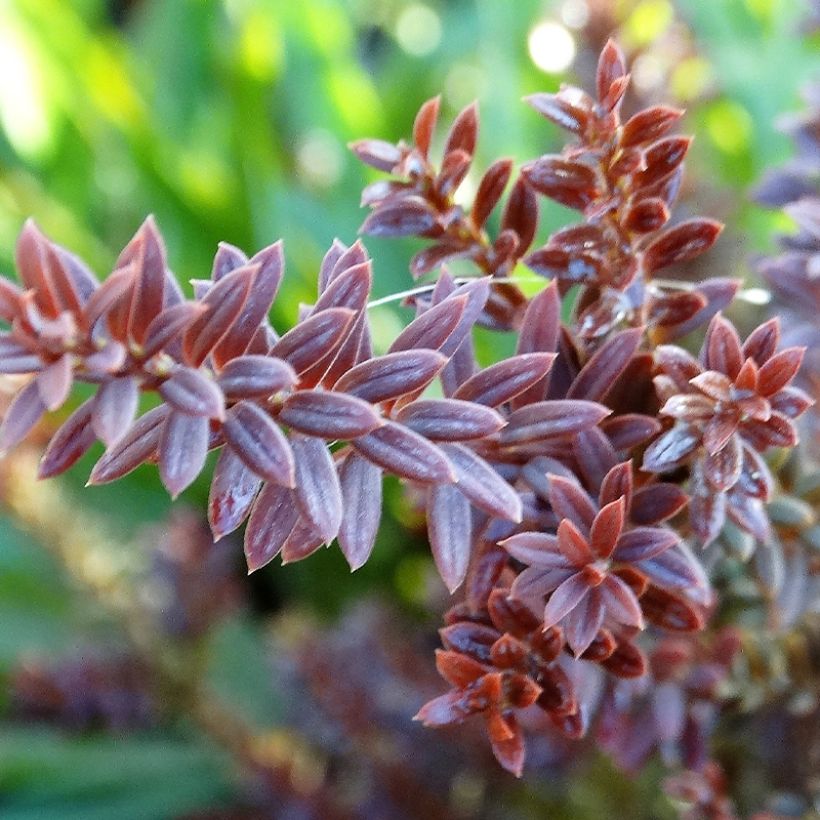

Plant habit
Flowering
Foliage
Botanical data
Podocarpus
Chocolate Box
Podocarpaceae
Podocarp
Cultivar or hybrid
Other Podocarpus
Planting and care
The 'Chocolate Box' Podocarpus can be planted from September to November and from February to June in well-drained, moist, not too dry, even poor, neutral to slightly acidic, or even limestone soil. It dislikes heavy, waterlogged, or very dry soil in summer and scorching temperatures. Choose a sunny to partially shaded location sheltered from prevailing winds. Soak the root ball well in a bucket before planting. Optionally, add organic matter at planting and water generously for the first two years, and during prolonged drought. You can apply a special conifer fertilizer every year in April. This hardy conifer, tolerant to temperatures as low as -15°C (5°F), can also be grown in a pot in very cold regions, as it can be moved to a cool, unheated space during winter. It tolerates pruning very well if you wish to give it a specific shape or form a low hedge. Otherwise, pruning is not necessary..
Planting period
Intended location
Care
-
, onOrder confirmed
Reply from on Promesse de fleurs
Conifers
Haven't found what you were looking for?
Hardiness is the lowest winter temperature a plant can endure without suffering serious damage or even dying. However, hardiness is affected by location (a sheltered area, such as a patio), protection (winter cover) and soil type (hardiness is improved by well-drained soil).

Photo Sharing Terms & Conditions
In order to encourage gardeners to interact and share their experiences, Promesse de fleurs offers various media enabling content to be uploaded onto its Site - in particular via the ‘Photo sharing’ module.
The User agrees to refrain from:
- Posting any content that is illegal, prejudicial, insulting, racist, inciteful to hatred, revisionist, contrary to public decency, that infringes on privacy or on the privacy rights of third parties, in particular the publicity rights of persons and goods, intellectual property rights, or the right to privacy.
- Submitting content on behalf of a third party;
- Impersonate the identity of a third party and/or publish any personal information about a third party;
In general, the User undertakes to refrain from any unethical behaviour.
All Content (in particular text, comments, files, images, photos, videos, creative works, etc.), which may be subject to property or intellectual property rights, image or other private rights, shall remain the property of the User, subject to the limited rights granted by the terms of the licence granted by Promesse de fleurs as stated below. Users are at liberty to publish or not to publish such Content on the Site, notably via the ‘Photo Sharing’ facility, and accept that this Content shall be made public and freely accessible, notably on the Internet.
Users further acknowledge, undertake to have ,and guarantee that they hold all necessary rights and permissions to publish such material on the Site, in particular with regard to the legislation in force pertaining to any privacy, property, intellectual property, image, or contractual rights, or rights of any other nature. By publishing such Content on the Site, Users acknowledge accepting full liability as publishers of the Content within the meaning of the law, and grant Promesse de fleurs, free of charge, an inclusive, worldwide licence for the said Content for the entire duration of its publication, including all reproduction, representation, up/downloading, displaying, performing, transmission, and storage rights.
Users also grant permission for their name to be linked to the Content and accept that this link may not always be made available.
By engaging in posting material, Users consent to their Content becoming automatically accessible on the Internet, in particular on other sites and/or blogs and/or web pages of the Promesse de fleurs site, including in particular social pages and the Promesse de fleurs catalogue.
Users may secure the removal of entrusted content free of charge by issuing a simple request via our contact form.
The flowering period indicated on our website applies to countries and regions located in USDA zone 8 (France, the United Kingdom, Ireland, the Netherlands, etc.)
It will vary according to where you live:
- In zones 9 to 10 (Italy, Spain, Greece, etc.), flowering will occur about 2 to 4 weeks earlier.
- In zones 6 to 7 (Germany, Poland, Slovenia, and lower mountainous regions), flowering will be delayed by 2 to 3 weeks.
- In zone 5 (Central Europe, Scandinavia), blooming will be delayed by 3 to 5 weeks.
In temperate climates, pruning of spring-flowering shrubs (forsythia, spireas, etc.) should be done just after flowering.
Pruning of summer-flowering shrubs (Indian Lilac, Perovskia, etc.) can be done in winter or spring.
In cold regions as well as with frost-sensitive plants, avoid pruning too early when severe frosts may still occur.
The planting period indicated on our website applies to countries and regions located in USDA zone 8 (France, United Kingdom, Ireland, Netherlands).
It will vary according to where you live:
- In Mediterranean zones (Marseille, Madrid, Milan, etc.), autumn and winter are the best planting periods.
- In continental zones (Strasbourg, Munich, Vienna, etc.), delay planting by 2 to 3 weeks in spring and bring it forward by 2 to 4 weeks in autumn.
- In mountainous regions (the Alps, Pyrenees, Carpathians, etc.), it is best to plant in late spring (May-June) or late summer (August-September).
The harvesting period indicated on our website applies to countries and regions in USDA zone 8 (France, England, Ireland, the Netherlands).
In colder areas (Scandinavia, Poland, Austria...) fruit and vegetable harvests are likely to be delayed by 3-4 weeks.
In warmer areas (Italy, Spain, Greece, etc.), harvesting will probably take place earlier, depending on weather conditions.
The sowing periods indicated on our website apply to countries and regions within USDA Zone 8 (France, UK, Ireland, Netherlands).
In colder areas (Scandinavia, Poland, Austria...), delay any outdoor sowing by 3-4 weeks, or sow under glass.
In warmer climes (Italy, Spain, Greece, etc.), bring outdoor sowing forward by a few weeks.

































